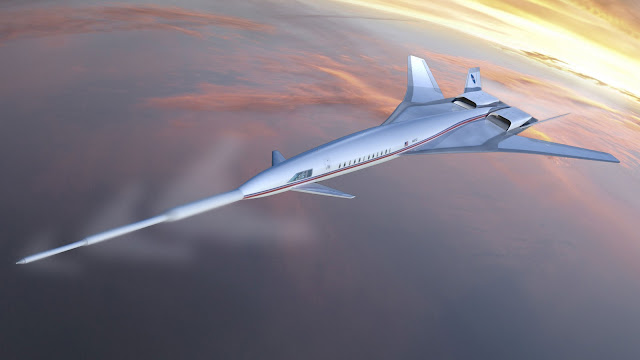Sonic booms usually mean something cool. The space shuttle is coming in for a landing or a jet fighter is flying overhead. We don't hear them very often, so when we do it's an event. But how will be if every single plane that is flying above our heads every time create sonic boom? Normal life would not be possible! And that is a major problem why airplanes for passengers and cargo are not climbing up to supersonic speeds over land. Sonic booms would be happening all the time; and they're loud and annoying. Noise regulations in most countries wouldn't allow it to fly over land because of the sonic booms it generated.
We have to figure out how to turn down the volume on sonic booms.
NASA has been doing flight tests and simulations and ground experiments. All of them have cool names: "Quiet Spike," "SonicBOBS," "SonicBREW," "LaNCETS," "House VIBES," "Low Boom/No Boom".
On the front of the airplane they put some kind of a spike. It's testing now, but who knows... Maybe that will be new system in the future to avoid sonic booms and to create high speeds for more enjoyable and shorter.
On Tuesday, January 25, at 3:00 p.m. ET, you can ask NASA aerospace engineer and "sonic boom guru" Ed Haering about what it's like to try to tame a sonic boom.
To join a chat, simply go to this PAGE on January 25. The chat window will opet at the bottom of that page starting at 2:30 p.m. ET. You can log in and ask questions at 3:00 p.m.
Artist's concept of a future supersonic cruise vehicle designed to have low-level sonic booms. Credit: Frassanito & Associates
NASA aerospace engineer Ed Haering and the Shaped Sonic Boom Demonstrator aircraft. Image credit: NASA/Tony Landis






